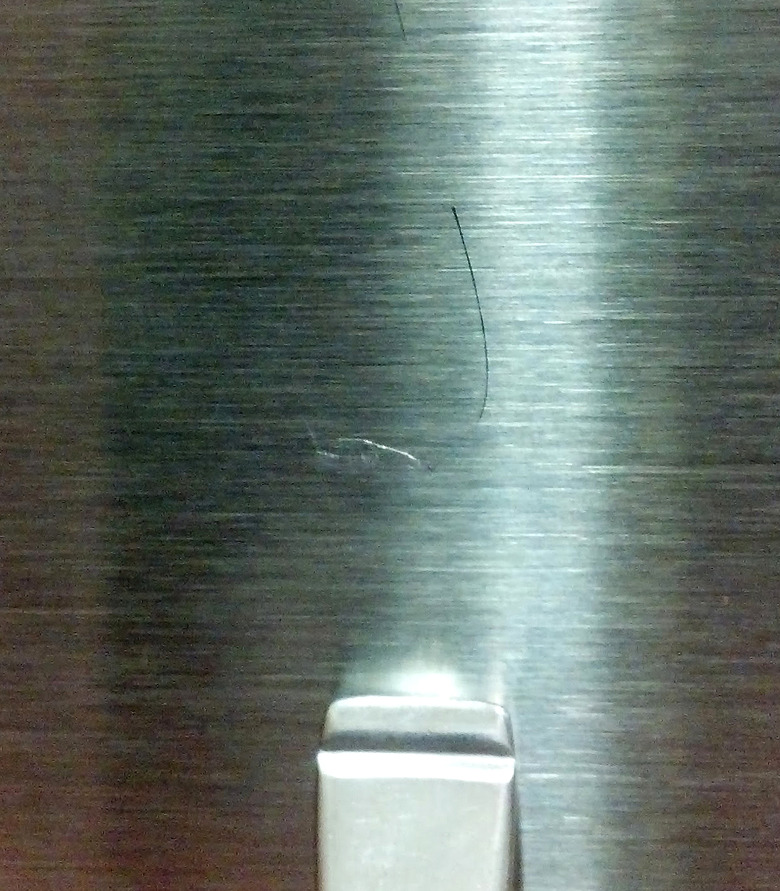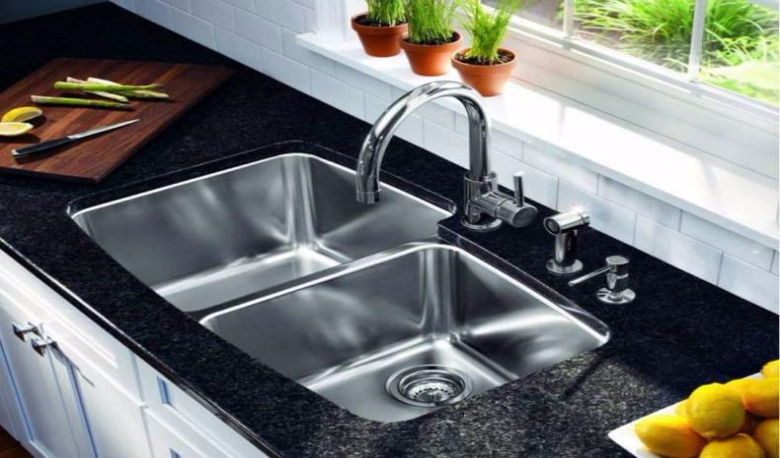How To Remove Scratches From Stainless Steel
We may receive a commission on purchases made from links.
Stainless steel is tough and resilient, and the chromium in the alloy that helps protect it from rust also makes stainless steel a little harder than it otherwise would be. But stainless steel alloy is low in carbon, and it's the carbon content of steel, along with specific heat tempering, that determines its hardness. So stainless steel, while hard, is by no means immune to scratches and scuffs—and those scratches matter, because stainless steel is meant to show off a smooth, pristine finish.
Scratches Happen
Scratches Happen
In the course of daily use, it's inevitable that your stainless steel appliances, countertops, or sink will suffer the occasional scratch. Fortunately, the same susceptibility that allowed the scratch to occur will also let you remove it through various techniques. The important thing to remember is to start with the gentlest abrasive methods first and work up from there until the scratch is gone. You don't want to create new scratches or to unintentionally mar the finish.
Make Sure It's Real
Make Sure It's Real
Be certain before you start that your stainless steel is real stainless and not a simulated stainless steel, and that it hasn't been clear-coated to make it fingerprint proof.
Real stainless steel is non-magnetic and fingerprints easily. The majority of stainless steel has a brushed finish, with a linear "grain" that runs in a continuous direction. Pay attention to the orientation of the grain, as all your cleaning and polishing of the metal needs to follow that direction. Never work across the grain in the metal when trying to remove a scratch.
Before beginning work on the scratch, clean the surface of the stainless steel thoroughly to remove any dirt or oily film. Use a vinegar solution followed by a good rinse or use a cleaning product specifically designed for stainless steel. Follow the manufacturer's directions carefully and remember to always follow the direction of the grain as you rub.
Removing a Scratch from Stainless Steel
Removing a Scratch from Stainless Steel
Hunker may earn compensation through affiliate links in this story.
Things Needed
-
Soft microfiber cloth or sponge
-
Soft toothbrush
-
Whitening toothpaste
-
Wet-dry sandpaper, 400- to 600-grit
-
Sanding block
Removing a Fine Scratch with Cleanser
The gentlest method of erasing a scratch from stainless steel is to work with a non-abrasive cleanser. These come in both powder and semi-liquid forms. If you use the powder, start by mixing it with water to make a thin paste.
- With a moistened
cloth or sponge, spread the cleanser onto the scratch and rub vigorously
in the same direction as the grain of the metal. Monitor your progress by flushing thecleanser with a wet sponge every so often to see if the scratch is gone. - If this technique removes the scratch, finish by applying a coat of stainless steel polish or olive oil. If not, move on to a slightly more abrasive approach (next technique).
Removing a Scratch with Toothpaste
Ordinary whitening toothpaste is mildly abrasive and in your next attempt at removing the scratch, you'll take advantage of that microscopic grit to go a little deeper on the stainless steel.
- Apply a coat of toothpaste to a soft-bristle toothbrush.
- Brush over the scratch, again working with the direction of the grain in the metal. Check your progress by wiping away the toothpaste with a wet cloth or sponge.
- Continue brushing, adding more toothpaste as necessary.
- If the scratch has been successfully removed, clean the area thoroughly and finish by applying stainless steel polish or olive oil. If the scratch is still not removed, move on to the next, more aggressive approach.
Removing Deep Scratches in Stainless Steel
If brushing with toothpaste didn't successfully remove the scratch, your only recourse will be to try and sand it out with extra-fine wet/dry sandpaper. This might take a little practice, so try it out in an inconspicuous spot first. Use a sanding block with the sandpaper to keep your pressure even.
- Wet the sandpaper. It's important to keep the sandpaper wet as you work.
- Dampen the area of the scratch with a sponge. As you work, repeat as needed to keep the surface wet.
- With light pressure, sand the scratch, working in the same direction as the grain in the metal.
- If your sanding doesn't remove the scratch in a few minutes, try a slightly coarser grit sandpaper. When the scratch is gone, revert to the finer sandpaper and sand lightly over the work area, then gently outward to blend with the rest of the stainless steel.
- Wipe the sanded area with a wet cloth or sponge. Keep in mind that you are wiping away loose grit from the sanding process, so use plenty of water, be gentle, and move in the same direction as the grain of the metal.
- Use a soft towel or cloth to dry the affected area.
- Finish by polishing with stainless steel polish or olive oil.
Tip
If you prefer, rather than assembling all the components you'll need to remove a scratch, you can purchase a stainless steel repair kit from your local home improvement center or on line. One popular brand is the Scratch-B-Gone kit. The kit includes abrasive pads of different grit, a sanding block, a polishing cloth and sanding fluid.


